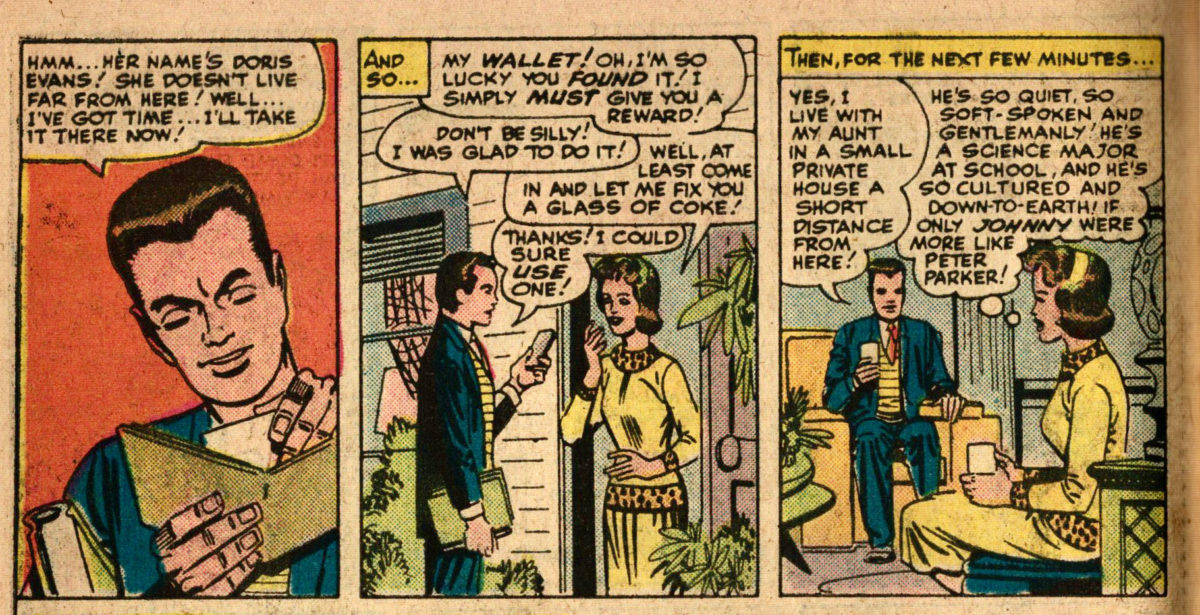Spider-Man vs. The Chameleon
Featuring: Spider-Man
Release: December 10, 1962
Cover: March 1963
12 cents
Script: Stan Lee
Art: Steve Ditko
10 pages
| Previous | #47 | Next |
|---|---|---|
| Amazing Spider-Man #1 | Reading order | Strange Tales #106 |
| Amazing Spider-Man #1 | Amazing Spider-Man | Amazing Spider-Man #2 |
How much does the job pay? I figure I’m worth your top salary!

We come now to the fourth and final Marvel superhero milestone of December 10, 1962
- Milestone #1 of December 10, 1962:
Fantastic Four meet the Hulk! - Milestone #2:
Iron Man - Miletone #3:
Amazing Spider-Man #1 - Milestone #4:
Fantastic Four meet Spider-Man!
A pretty exciting day in the history of Marvel superheroes indeed.
While the first story of Amazing Spider-Man #1 was largely a character-focused tale, this one gets more into the superhero action.
There are two main thrusts. The first is the meeting between Spider-Man and the FF! And of course, when they meet, they fight. The FF were understandably unhappy about Spider-Man breaking into their headquarters, and Spider-Man saw taking them on as a way of proving his worth to them.

He thought joining the Fantastic Four would be the secret to solving his money woes, but he learned they are a non-profit organization that pays no salary.
Continue reading “Amazing Spider-Man #1, Story B”


























